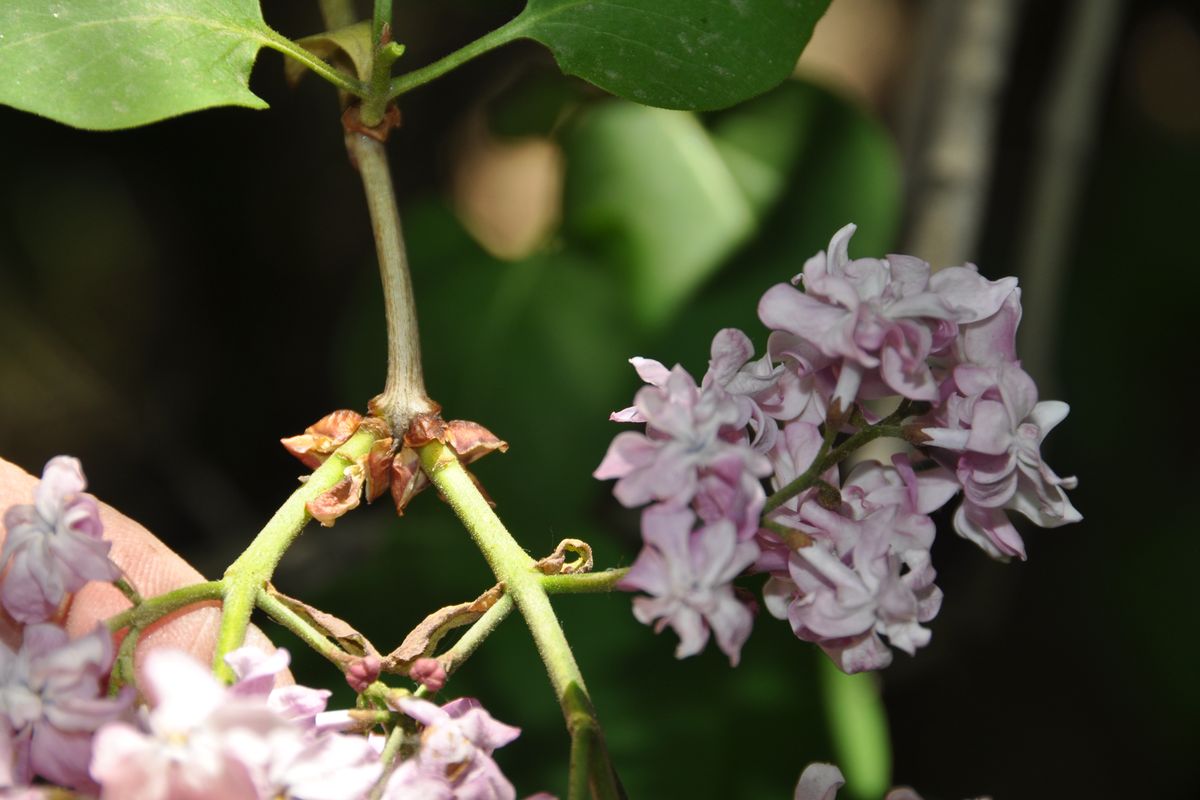Gardening: Spokane’s namesake flower, lilacs, are nonnative but flourish once established

Not only are our gardens bursting with color right now, they are also giving off heavenly fragrances that sweep away the last vestiges of winter doldrums and COVID blues. Right now, Spokane’s namesake flower is putting on a show, and the fragrance of lilacs is everywhere. Spokane is really the Lilac City at the moment.
Lilacs were brought to our region with the early settlers who tucked small, rooted plants in their trunks and boxes so they could put a reminder of their original homes into their new gardens. The lilac proved to be tough and resilient in our harsh climate. Tough enough to still be standing at old homesteads long after the buildings had collapsed and returned to the earth.
In 1912, John W. Duncan, the Spokane Parks Director, planted 128 lilac bushes in Manito Park and encouraged people to plant more in their yards. Plant they did and in 1938, the Associated Garden Clubs of Spokane and the Spokane Floral Association hosted a large flower show to celebrate them. This show evolved into the Lilac Festival we still celebrate every year and into our local tagline of the “Lilac City”. In 2005, the Spokane Lilac Society introduced the variety “Spokane”, a large shrub with dark lilac flowers that age to a pale lilac.
Today, there are over a thousand different varieties of lilacs in the horticultural world. They range from the small-sized Miss Kim, the Boomerang series and Tinkerbell that get to about three feet tall to the 8- to 10-foot-tall hedge monsters found in the older parts of town. They bloom in white, blue, lilac, magenta and yellow.
When choosing a lilac, size is important. If you have a smaller lot, research smaller or dwarf lilacs. Lilacs need to be planted in full sun to develop a full head of flowers. They are adaptable to a wide range of soils including sand and clay that is mixed with a good amount of compost. Once the plants are established, they are fairly drought tolerant and only need a good soaking every two weeks in our hot summers.
While lilacs are fairly maintenance free, they produce more flowers if they are deadheaded right after they finish flowering and before the middle of June when they set next year’s flower buds. Deadheading after this will result in losing next year’s blooms. To deadhead, locate the two, pointed buds at the base of the flower and snip off the old flower just above the buds as can be seen in the photo above.
If you have older lilac shrubs that are getting tall or that the flowers are all at the top of the shrub, now is the time to bring them down to size. Identify the largest and thus oldest stems on the plant and remove a third of them to the ground. Next year, remove the second third and the third year the last third. Over the three years you will have rejuvenated the entire plant.